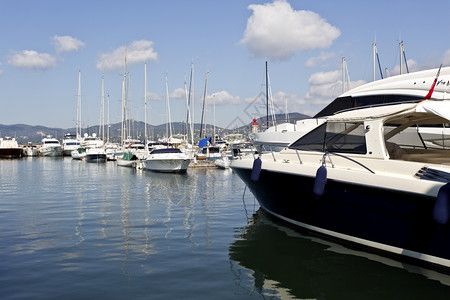When traveling, portable gas detectors can help tourists better protect their health. For example, if they encounter toxic gases, such as Hydrogen Sulfide (H2S), Carbon Monoxide (CO), etc., during their journey, it can monitor the gas concentration in real time and display it in the test results. If the gas concentration exceeds the safety standard, tourists can take appropriate measures, such as leaving the dangerous area or taking respiratory protection. Gas monitors can detect the presence of harmful gases in the surrounding environment in various travel scenarios such as road trips, public transport and sea trips, thus ensuring the health and safety of travelers. Therefore, carrying a portable gas detector is an essential tool when traveling.
A portable gas monitor is a small, lightweight instrument that can quickly and accurately detect gas concentrations in the environment. It works by detecting gas molecules and converting the results into digital signals for real-time monitoring and display through an electronic controller. Compared with traditional gas detectors, portable gas detectors have the advantages of easy operation, fast response time, high accuracy, etc., so they are popular among tourists.
Gas Monitors for Road Trip
During road trips, especially when using a caravan, campervan or wild camping, gas monitoring is carried out to ensure the safety of the tourist's environment in the vehicle. The following gas detectors are often used on road trips:

Carbon Monoxide (CO) Gas Detector: If travelers use gas appliances (e.g. cookers, water heaters, etc.) in their vehicles, CO may be produced. CO is a colorless, odorless gas that may accumulate and become hazardous to the human body under improper ventilation. Carbon Monoxide gas monitors can help travelers detect and avoid the risk of CO poisoning in time.
Combustible Gas Detector: When using stoves, water heaters or other gas appliances, there may be a risk of combustible gas leakage (e.g. Methane, Propane, etc.). Carrying a combustible gas monitor can help visitors detect potential leaks early and keep them safe.
4 Gas Multi Gas Detector: Portable 4 gas multi gas detector can provide more comprehensive safety protection. It can simultaneously detect multiple types of gases, including:
- Carbon Monoxide (CO)
- LEL
- Hydrogen Sulfide (H2S)
- Oxygen (O2)
Gas Detectors for Sea Travel
In maritime or sea travel, especially in the environment of ships, yachts, submersibles, etc., the use of some gas detectors can ensure the safety of tourists.

- Oxygen (O2) Gas Detector: Inside a ship or submersible, variations in Oxygen levels can affect the safety of tourists and crew. Carrying an Oxygen gas detector can ensure that the Oxygen levels inside the ship are within safe limits to avoid problems such as hypoxia.
- Combustible Gas Detector: Combustible gases such as liquefied petroleum gas (LPG) may be used as fuel on board ships. Combustible gas detectors can help passengers detect any gas leakage inside the ship to prevent the risk of fire or explosion.
- Hydrogen Sulphide (H2S) Gas Detector: If tourists are planning to go deep sea diving or other marine activities, they may encounter toxic gases such as Hydrogen Sulfide (H2S), etc. .The H2S gas detector can help divers to detect if there is any leakage of H2S, giving an early warning of toxic gas leakage.
- Carbon Monoxide (CO) Gas Detector: In ships or cabins, improper ventilation can lead to Carbon Monoxide (CO) build-up. Carrying a CO gas detector can help tourists detect CO leaks early and avoid CO poisoning.
- Multi Gas Detector: Portable or handheld multi gas monitors (4 gas) can detect multiple types of gases including Oxygen (O2), Carbon Monoxide (CO), combustible gases, and Hydrogen Sulfide (H2S) at the same time in the environment of ships, cargo holds, yachts, and submersibles.
Gas Monitors for Public Transport
In public transport, especially large vehicles such as aircraft, trains and buses, some gas monitors are usually used to ensure the safety of passengers and staff.

Portable Multi Gas Detectors
4 Gas Multi Gas Analyzer: This handheld multi gas analyzer can detect 4 gases, including:
- Nitrogen Dioxide (NO2)
- Sulfur Dioxide (SO2)
- Carbon Monoxide (CO)
- Ozone (O3)
5 Gas Multi Gas Detector: This portable 5 gas multi gas detector device can detect 5 gases, including:
- Carbon Monoxide (CO)
- Hydrogen Sulfide (H2S)
- Oxygen (O2)
- LEL
- Volatile Organic Compounds (VOC)
Single Gas Monitors
Oxygen (O2) Gas Detector: In high-altitude flights, the level of Oxygen in the cabin of an aircraft is a critical issue. Pilots and crew usually monitor the Oxygen level in the cabin to ensure the safety of passengers and crew.
Carbon Monoxide (CO) Gas Detector: In vehicles with internal combustion engines (e.g. cars, buses), Carbon Monoxide(CO) is one of the exhaust gases produced by the combustion process. Carbon Monoxide gas detectors monitor the concentration of CO in the air to ensure that dangerous levels are not reached, protecting the health of passengers and drivers.
Combustible Gas Detector: For transport vehicles that use liquefied petroleum gas (LPG) or other gases as fuel, such as tourist buses, combustible gas detectors can detect whether there is a gas leak to prevent the risk of fire and explosion.
Whether traveling by land, air, or sea, our gas detector can detect dangerous and harmful gases in the surrounding environment. These devices improve travel safety by providing early warning signs of gas-related risks, making travel safer and reassuring both tourists and transport operators.
